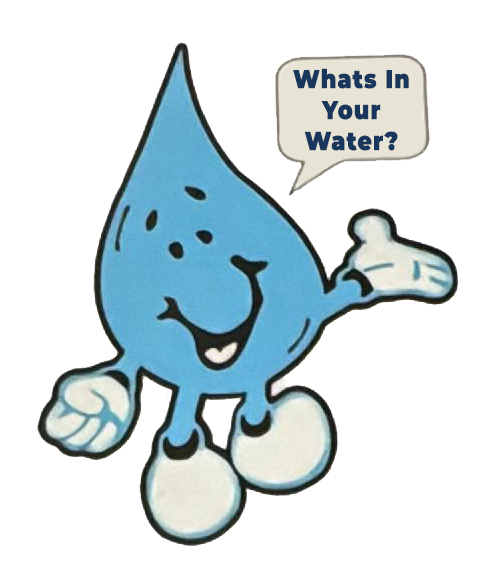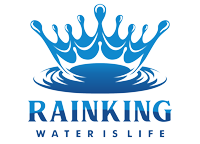[ad_1]

While you know a water softener can solve a variety of hard water problems, many homeowners still have questions about what takes places inside those tanks. One of the most common points of confusion for homeowners revolves around water softener salt.
Every time you haul a heavy bag of softener salt into your home and refill the brine tank, you may wonder … “How much of this salt ends up in my water? Am I drinking, bathing in, and cooking with salty water?”
The truth is, water softeners do not add any salt to the water. The water softening process breaks down the salt to use its sodium. There is a difference.
To clear things up, salt, also known as sodium chloride (NaCl), contains sodium (Na). Salt is a chemical compound while sodium is an element. You’ll find sodium in many foods and ingredients such as bread, pizza, cheese, and most obviously, table salt.
But why do water softeners need sodium? How much sodium is transferred to your water by your system? And most importantly, can it affect your health? We spoke with Operations Manager, Nate Fritz, at Clean Water Center, our local water treatment dealer in Appleton, Wisconsin, to find out.
A Glimpse at How Water Softeners Work
Fritz explains that sodium’s role in softening water requires a basic understanding of how traditional water softeners work. Without adding sodium to your water softener, hard water minerals cannot be properly removed.
The dissolved minerals calcium and magnesium are what cause hard water. In order to remove those minerals, water must go through what’s known as an ion exchange process.
This exchange takes place in the cylinder tank that’s full of media, such as resin, or our exclusive well-water media, Crystal-Right™. Essentially, calcium and magnesium ions are captured by the media inside and removed from the water before it travels to the rest of your home.
“The media is negatively charged, and your water’s hardness is positively charged,” explains Fritz. “Opposites attract and the positive and negative ions bond together as water flows through the resin to be cleaned.”
The Ion Exchange Process

Once all the resin gets filled up with hard minerals, it needs to be recharged, and that’s when the softener salts go to work. During your water softener’s regeneration cycle, which often happens while you sleep, salty water from the brine tank runs through the media tank.
The sodium in the brine solution also has a positive charge. So, it breaks away from the chloride and attaches to the negatively-charged resin. When that happens, the calcium and magnesium molecules get kicked off the softening media and flushed out of your system. This leaves the media recharged and ready to continue removing hard minerals from your home’s water.
The next time the ion exchange process happens during softening, the sodium molecules are released from the media and travel with the soft water throughout your home.
The good news is, sodium does not contribute to any of the hard water issues that calcium and magnesium cause. Still, many homeowners wonder if sodium in their water can have other effects. If you drink soft water with sodium, could it affect your health?
So, How Much Sodium is in Your Water?
The amount of sodium in softened water depends on how hard the water is to begin with. The ion exchange process is just that, an exchange. The harder the water, the more sodium is required to remove the calcium and magnesium.
However, even with extremely hard water, the total sodium is minimal. It’s so small, softened water falls within the Food and Drug Administration’s category of “very low sodium.” This means that the level of sodium should have little or no effect on most healthy adults.
“A lot of people look at a water softener and see that big tank of salt and think that water is always flowing through and absorbing the salt,” says Fritz. “To put it in perspective, if you were to drink an entire gallon of softened water that originally had 20 grains of hardness per gallon (gpg), that would be about the equivalent sodium intake to eating four slices of white bread.”

Basically, homeowners don’t have much to worry about in terms of softened water impacting their health. The benefits of soft water on your skin, home, clothes and appliances, however, are abundant.
Getting the Right Water for Your Home
Although the amount of sodium consumed in soft water is minimal and poses no serious health risks, some people would prefer not to drink it. In those cases, an ideal addition to your home is a reverse osmosis (RO) system. These drinking water systems remove sodium, chlorine from city water, and a host of other unwanted contaminants, providing great-tasting water.
Each home’s water is different, which is why you should always have a water treatment expert assess the conditions and provide a recommendation based on your specific needs and expectations.
Traditional vs. Salt-Free Water Softeners: What’s the Difference?
Perhaps you’ve heard of salt-free water softeners and wondered if they were an effective option to soften water and minimize salt usage. Fritz explains there is a big difference between the two and that salt-free (or tankless) water softeners are an ineffective method to treat hard water.
“Salt-free water softeners are not removing the calcium and magnesium that makes water hard, they’re just chemically altering the hard water minerals so that they won’t cling to things,” Fritz warns.
Water softeners actually remove problem minerals whereas salt-free water softeners simply condition them. With a salt-free water softener, homeowners might see a slight reduction in spotting and scale, but you won’t get all the benefits of a traditional water softener.
Because of this, even resources for homeowners such as Angie’s List caution homeowners to understand the difference.
“The advantage of water softeners is they can extend the life of your water-using appliances, your plumbing, and even your clothes,” Angie Hicks, co-founder of Angie’s List adds. “One study showed that water heaters using hard water lost half their efficiency over a 15-year lifetime, whereas those using softened water retained their original efficiency rating.”
The same holds true for dishwashers and washing machines. When they run on hard water, these appliances become less and less effective until eventually they break down. Hard water minerals also react with shampoo and soap to form a scum that sticks to the sides of the bathtub (and to your skin). When you install a traditional water softener, cleaning products clean better because the hard water minerals are removed requiring less elbow grease and less product.
Fritz also mentions that some salt-free or tankless water softeners owner’s manuals actually suggest using a traditional water softener in conjunction with a tankless water softener. In reality, all you really need is one good traditional system that is calibrated to treat the water quality in your home.
[ad_2]
Source link



